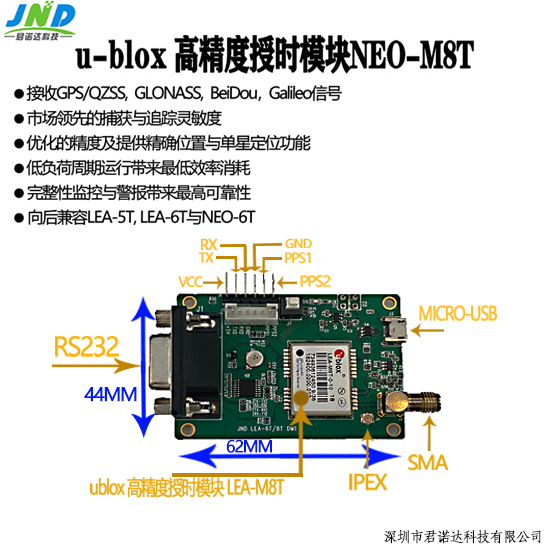There are two main aspects to enhance dual-frequency positioning .
The high code rate can effectively improve the accuracy.
First of all, let's talk about the situation of L1, L1 is a satellite frequency that has long been supported by the American Empire. It is also the first generation of frequencies open to civilian use. There is also the same generation of L2 only this frequency L2 is military. L1 and L2 in addition to different random code and carrier frequency, their code rate is also different. L1 code rate is low, each code occupies a time of about 10 minus 6 times the square second. Of course, these signals travel at the speed of light, which is three times ten to the eighth power, so the time multiplied by the speed of light is close to 300 m. The code rate for L2 is L1 Each code occupies 10 times fewer time periods than ten times L1, which becomes ten times ten minus seven. Multiply that by the speed of light to about 30 meters. Of course, this is the resolution of one satellite. If multiple satellites are used at the same time, many of which will have intersecting ranges of illumination, then the L1 accuracy is much less than 300 meters. L2 is a bit more accurate.
L5 and L2 use the same code rate, but are open to civilian use. Having said that, the first benefit of L5 should be generally understood.
In addition, what are the benefits of this resolution for the urban environment? There are many high-rise buildings in cities. When these buildings reflect, the satellite signals become very confused and intertwined with the correct direct signal. We call this multipath (multiple paths). Keep in mind that these signals travel at the speed of light, and even a small reflection causes a small delay in the signal if it is a large distance from the speed of light multiplied. These reflected signals are the source of error. Think again, with all the buildings around you, satellite signals reflect more than once. Now is there a way to handle these reflected signals? In fact, some algorithmic engines perform various optimizations to eliminate these errors. The most common is to select the point with the highest spectral density. However, due to multipath effects, the point with the largest spectrum is most likely not obtained by direct signaling.
L5 Although the signal rate is high, the spectral density is more likely to be concentrated.L5 It also reflects, but the likelihood of the reflected error signal being superimposed on the correct straight signal to form a new peak in spectral density is relatively low. This also makes it easier for the computer engine to find the direct satellite signal. Of course, one situation that can't be solved is L5 If the phone can only see reflected signals with no direct signals, there's nothing that can be done.
Then you may ask, L5 high bit rate so good, why not just use it?L5 ah? Because L1 low bit rate is easier to capture. Without sacrificing positioning time, we need accuracy. L1 is also known as the rough capture code, after the signal is captured, L5 can be involved in the calculation. 2.
2. two frequencies can eliminate ionospheric errors.
If there is only L1, when the cell phone receives the signal, it should be L1 and it is a straight shot. But in reality L1 refraction may have occurred in the atmosphere, and refraction causes some delay. Remember the speed of light travels. Atmospheric delays can lead to large errors. Many scientists believe that atmospheric errors account for 60% of the weight of all errors.
Anyone who has taken a college physics class should know this. Signals of different frequencies have different refractive indices through the same medium. l5 is born with a different frequency than l1. The satellite sends out two frequency signals at the same time, but the cell phone receives them at different times, giving the cell phone a chance to calculate the atmospheric error and then eliminate it.
So dual-frequency GPS will be the future development trend, and can effectively improve the positioning experience. But what I want to say is that dual-frequency GPS is not a revolutionary change, although it is a great improvement. But in any case, Xiaomi took this step, without this first step to try and stay in place, how to promote the development of the industry. We should be rational and tolerant of new features.
Ltd. specializes in high-precision GNSS modules and wireless communication products, technology development and application promotion service providers, relying on the wireless communication technology in the field of R & D and promotion of experience, JUNODA set up a team with a wealth of experience in hardware and software development technology, aimed at domestic and foreign OEM / ODM customers and system integrators to provide high-quality, high-performance wireless modules and applications! We aim to provide high-quality, high-performance wireless modules and application programs to OEM/ODM customers and system integrators at home and abroad, and create long-term value for customers!
The company mainly provides integrated antenna module, dual-frequency high-precision module, single-frequency high-precision module, thousand-seeking high-precision module, Zhongke micro-positioning module, U-BLOX positioning module, SICOM communication module, inertial navigation DR module, UWM GNSS module, RTK differential module, 4G communication module and high-precision antenna, etc., the products are sold well in Beijing, Shanghai, Shenzhen, Guangdong, Jiangsu, Zhejiang, Sichuan, Hunan and other parts of the country. The company's GNSS modules are widely used in drones, vehicle security monitoring and scheduling, automatic bus stops, DVR tachographs, car DVD navigation, GPS electronic dog, synchronized timing, high-altitude balloon monitoring, engineering machinery, industrial automation and other applications.

In the field of wireless communication products, the company keeps abreast of the latest development of international communication technology, introduces and acts as an agent for wireless communication modules that meet the market demand, and the products have a comprehensive layout from 2G, 3G, 4G, and are widely used in financial electronic payment, vehicle remote control, remote advertising information, repeater monitoring, mobile Internet terminals, smart home, remote medical care, network testing, enterprise information management, anti-theft alarm, Remote video transmission, intelligent meter reading, mobile computing, network navigation, voice phone, wireless gateway and other fields. Focused areas include video surveillance, network optimization, routers, POS and other M2M industry applications.
If you need to consult, please contact online customer service!














